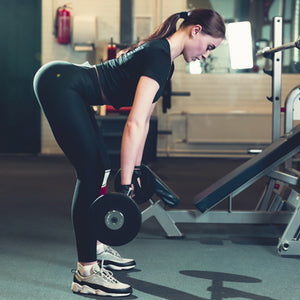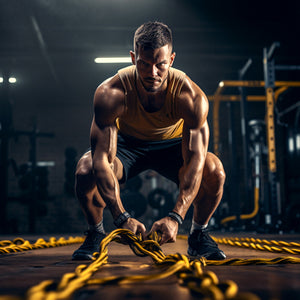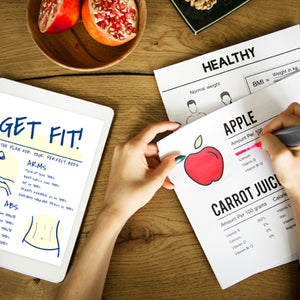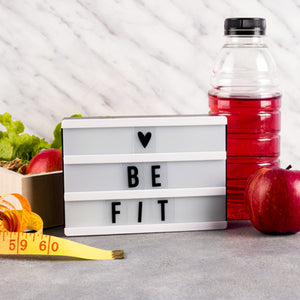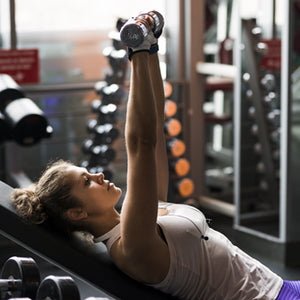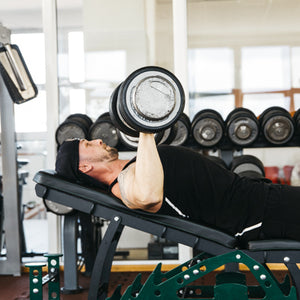
9 Gym Bag Essentials Every Lifter Must Have
To make progress.
The pursuit of the ever-elusive "gains" is a game that tests our patience day in and day out. In the words of Bro Scientist Dom Mazzetti, "The day you started lifting is the day you became forever small because you'll never be as big as you want to be."
When you set foot in the gym, you are at work...a construction site for your body. Why wouldn't you bring the tools to get the job done?
Now, I'm not saying you can't get quality work done without these tools...but what will make you the most efficient?
Here are some tools to help you make those gains.
9 Must-Haves for Every Gym Bag
Tool #1 - A good quality lifting belt
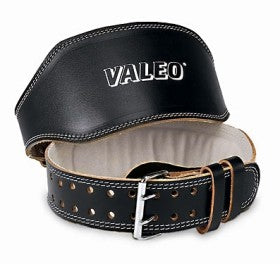 Need a lifting belt? Tiger Fitness stocks plenty of quality options for every budget. Shop now.
Need a lifting belt? Tiger Fitness stocks plenty of quality options for every budget. Shop now.Belts have come with all kinds of recommendations over the years ranging from "wear a belt all the time" to "wear a belt to keep your waist small" to "never wear a belt, it prevents you from using your core!" All us these are certifiable nonsense
The thought that a belt is some sorta brace that prevents you from engaging your core just isn't something that holds much merit. In fact, research has shown wearing a belt can increase activation of lower-back muscles (erector spinae) by up to 25%.
On top of that, studies have shown belts to increase intra-abdominal pressure by up to 40%. Essentially, by holding air in your abdomen you are creating a safety barrier to stabilize your spine from the inside. More stabilization will lead to lifting heavier weights, safer.
Tool #2 - Versa Gripps or Lifting Straps
 Versa Gripps come in many colors and sizes. Shop now.
Versa Gripps come in many colors and sizes. Shop now.While grip strength is something you should train, you should never handicap the training of your other body parts due to losing your grip.
There's no good reason to take weight off the bar or do less reps just because your grip is starting to poop the bed. I mean really, the forearms are a tiny muscle group... do we really expect them to be able to keep up with our legs and back?
Tool #3 - Weightlifting Shoes
Originally called "Olympic Weightlifting shoes," these shoes have raised heel and solid sole.Not only does a weightlifting shoe provide a safer lifting surface, the heel is typically raised either a 1/2" or 3/4" the slight elevation allows for a lifter to get deeper in the squat position by reducing the ankle's range of motion. These shoes are especially helpful for lifters with poor ankle mobility.
Tool #4 - Gym Chalk
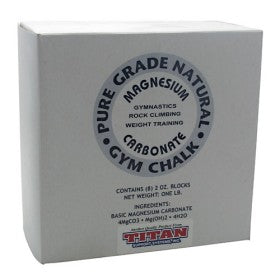 Click here to purchase Titan Pure Grade Natural gym chalk.
Click here to purchase Titan Pure Grade Natural gym chalk.Nothing is more anabolic than clapping a huge cloud of dust into the air before your big lift. It reminds me of something in a Rocky movie.
Instant gains.
But seriously, chalk is perhaps the most basic but necessary tool in your gym bag. Sweaty hands? Rub some chalk on there to get the best grip possible.
Aside from their hands, many powerlifters chalk their back and even their butt to get a better grip on the bench. Chalk can also prevent calluses from ripping by keeping the bar from slipping in your hands.
The only downside is many commercial gyms don't allow real chalk in their facilities because it can make a mess. If your gym doesn't allow real chalk, look into a liquid chalk such as liquid grip...not quite the same but it still works wonders.
Tool #5 - Wrist Wraps
 Click here to shop our huge selection of wrist wraps now.
Click here to shop our huge selection of wrist wraps now.When you're dealing with heavy weights things get uncomfortable. The more comfortable you can make a movement, the more successful you will be at it.
Some movements such as the low-bar squat or the bench press can aggravate a lifter's wrists. Wearing wrist wraps can add stability and support to help in the lift.
Tool #6 - Headphones
This one is self explanatory. Keep the headphones on and the world off.We're in the gym for one reason; to train. I'd recommend wireless headphones, they are convenient and don't get in the way.
Tool #7 - Workout Nutrition
 Machine Fuel BCAAs come in 3 amazing flavors: watermelon, grape and mixed berry. Buy now.
Machine Fuel BCAAs come in 3 amazing flavors: watermelon, grape and mixed berry. Buy now.It's always good to keep some fuel in your bag for those never ending training sessions.
When I'm training high volume and high intensity, I like to mix a little pre- workout and BCAA's together and sip on that during the session. This keeps me going full steam without getting gassed.
Research has shown supplementing with branched chain amino acids (BCAA) intra-workout can help prevent muscle damage and lessen muscle fatigue in long training sessions.
Tool #8 - Training Log
The key to improving your performance or physique is progressive overload. Adding volume to your training over time.Volume = Reps X sets X load (weight lifted)
Basically, if you are adding to any of the training variables over time you are progressively overloading. How are you going to know if you did one more rep this week over last?Even someone with the best memory in the world isn't going to remember every single weight they lifted for each exercise and how it felt. Do everything in your power to get better. Knowing if a program is working for you is key.
Tool #9 - Deodorant
Last, but definitely not least...deodorant. Ever reach up to the lat pull down and catch a whiff of what you have cooking in there?Yeah....if you smell it everyone else does too. Don't be THAT guy or girl.
References
1) Finnie, S. B., et al. Weightlifting belt use patterns among a population of health club members. J. Strength Cond. Res. 17:498-502, 2003.2) Zink, A. J., et al. The effect of a weight belt on trunk and leg muscle activity and joint kinematics during the squat exercise. J. Strength Cond. Res. 15:235-240, 2001.
3) Bauer, J. A., et al. The use of lumbar-supporting weight belts while performing squats: Erector spinae electromyo- graphic activity. J. Strength Cond. Res. 13:384-388, 1999.
4) Harman, E. A., et al. Effects of a belt on intra-abdominal pressure during weightlifting. Med. Sci. Sports Exerc. 21:186-190, 1989.
5) Lander, J. E. The effectiveness of weight belts during multiple repetitions of the squat exercise. Med. Sci. Sports Exerc. 24:603-609, 1992.
6) Bourne, N. D. and Reilly, T. Effect of a weightlifting belt on spinal shrinkage. Br. J. Sports Med. 25:209-212, 1991.
7) Reilly, T. and Davies, S. Effects of a weightlifting belt on spinal loading during performance of the dead lift. J. Sports Sci. 13:433, 1995.
8) Kingma, I., et al. Effect of a stiff lifting belt on spine compression during lifting. Spine 31(22):E833-839. 2006.
9) Giorcelli, R. J., et al. The effect of wearing a back belt on spine kinematics during asymmetric lifting of large and small boxes. Spine. 26:1794-1798, 2001.
10) Lander, J. E., et. al. The effectiveness of weight-belts during the squat exercise. Med Sci Sports Exerc. 1990 Feb;22(1):117-26.
11) Renfro, G. J. and Ebben, W. P. A Review of the Use of Lifting Belts. Strength and Conditioning Journal 28 (1): 68-74, 2006.
12) Coombes, J. S., & McNaughton, L. R. (2000). Effects of branched-chain amino acid supplementation on serum creatine kinase and lactate dehydrogenase after prolonged exercise. J Sports Med Phys Fitness, Sep;40(3):240-6.

